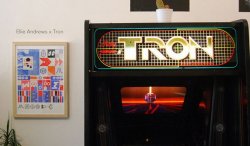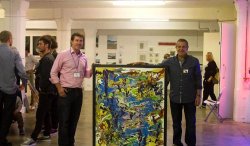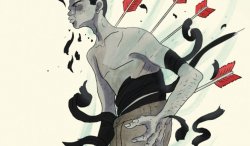- Jobs
- Open Calls
- Events
- Learning
- More
- SUBMIT
COLOR PSYCHOLOGY & COMMERCIAL STILL LIFE: AN INTERVIEW WITH UEL STUDENT, DOVYDAS ARLAUSKAS
DOVYDAS ARLAUSKAS
1. Tell us a little about yourself. Are you from an artistic family ?
I grew up in Lithuania and moved to Leeds when I was 14 years old to live with my mother who had moved there a few years before. From a young age, I was always interested in construction and grew up watching my granddad build houses and furniture at his workshop. It was from there my passion for making things emerged in various ways and eventually, it led to my passion of photography and prop making.
2. What initially sparked your interest in Photography ?
I remember this like it was yesterday; my mother was living in the UK when I was about 13 and I was back in Lithuania, living with my grandparents. She came back to visit us one summer in 2003 and she brought back a Polaroid P600. I fell in love with it.
" I loved that I could capture something beautiful that may only last a moment in real time, but once I photographed that moment, I would be able to have it forever. "
3. Who or what has been the biggest single influence in your way of thinking ?
Casey Neistat.
4. You have already received a few commissioned projects as a student. How have your managed to market yourself so well so early in your career ?
To be totally honest with you, a lot of it was good timing and luck. Once I shot an image for a uni project of a sculpture I made out of cigarettes. We held an exhibition at our university and someone just seemed to need an image for an anti-smoking campaign. Most of my other commissions came from word of mouth. Someone mentioned that I shoot still life, I did a shoot for them, they proceeded to tell someone else the work I had produced was good and so on and so forth. So I realized that socializing and making connections was worth a lot as it helped me to be seen and heard by people who I wouldn’t have reached otherwise.
" Someone mentioned that I shoot still life, I did a shoot for them, they proceeded to tell someone else the work I had produced was good and so on and so forth. "
5. What are you aspirations for the future ?
My short-term goals are to assist photographers to gain the necessary experience needed for the industry, because I don’t think I could or would know how to survive out there as a freelance photographer. I’m only a small fish in a very big pond at the moment. Long term goals are to own a studio, work for my self and hold workshops to teach younger generations how to shoot and develop film.
6. What inspired you to create your Chromophobia series ?
Chromophobia started as a small project inspired from a book called “Chromophobia” by David Batchelor. After reading the book, I had a great interest in colour and light. I began researching the psychological side of colour, what effect it has on a human brain and what our relationship to colour is or can mean. I have always been interested in nature and landscape, not necessarily in photography, but I disassociate the neon luminescence from its natural habitat, by placing it within a natural setting.
" I had a great interest in colour and light. I began researching the psychological side of colour, what effect it has on a human brain and what our relationship to colour is or can mean. "
7. What was the most challenging part of this particular project and are you planning to develop it further ?
Timing was the biggest challenge during this project. The shots had to be taken at dusk or dawn when the sun was peaking over the horizon. Not only that, but in order to be able to access the caves the tide had to be out. Therefore I could only shoot on days when the tide times and sunrises and sunsets coincided.
8. Describe the day in a life of a Photography Student at the University of East London.
A day at the University of East London would be quite busy, so it would start with a strong cup of coffee. I would then make my way to my first lecture were I would discuss the progress of my project. Moving on from the lecture, I would visit the workshop and develop the lightbox. After that, I would pop into the library to take some books out for the research of the project. I would visit the MPS store where I would rent out some gear to do test shots, and then I would go to the digital darkroom to scan and edit the shots. If I have time I would go back and do more testing, if not I would go straight to the studio to work on my personal portfolio. I usually would get kicked out of the studio because I would run over time. So that would be one of the days, but everyday is different and something new comes up so no day is the same at UEL.
|
CHARLIE HOOD
Art Gallery Director |
OLIVER NORRIS & LEAH MICHELLE
Fair Director |
LINNEA STRID
Fine Artist |
Crom - Cristian Ortiz
Illustrator |









